This stewardship initiative applies to all antibiotic prescriptions including those for prophylactic purposes.
The MARR Coalition heralds the American Dental Association in joining the Antimicrobial Resistance Challenge and their commitment to improving the use of antibiotics in dental patients. This webpage is dedicated to providing the dental office and dental students with tools and resources to support the ADA efforts to enhance antibiotic stewardship.

This information on this page and throughout the MARR antibiotic stewardship in the dental office program was done through a collaboration with the Organization for Safety and Asepsis Procedures (OSAP). You can find more information on their website at https://www.osap.org
Intended Use: To be displayed in a patient-centered location to educate patients on antibiotic stewardship in the dental setting.
Provider commitment posters have been shown to positively impact patient expectations around antibiotic prescribing. These posters can be personalized for your dental office by providing us with your logo. The brochures cover the benefits and risks of antibiotics used in dentistry.
Intended Use: To use as a patient-facing resource to support the recommendations from the 2019 ADA guidelines for management of and distribution in the dental office among patients who would benefit from delayed prescribing.
Delayed prescribing, or watchful waiting, of antibiotics is a practice that can be used by health care providers to reduce unnecessary prescribing. In this practice, dental health professionals advise their patients to fill their prescription only if their symptoms worsen or do not improve after a period of time.
MARR has developed a tool to help dental professionals practice delayed prescribing. This 4” x 6”, 25 page notepad describes how and why the patient should wait to have their antibiotic prescription filled, and addresses pain management.
MARR provides this notepad to dental offices free-of-charge.
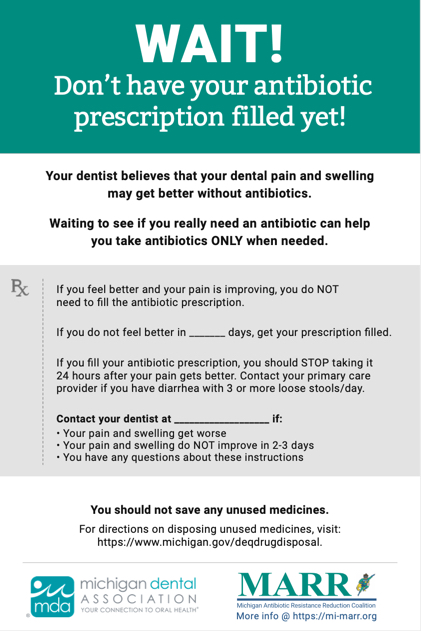
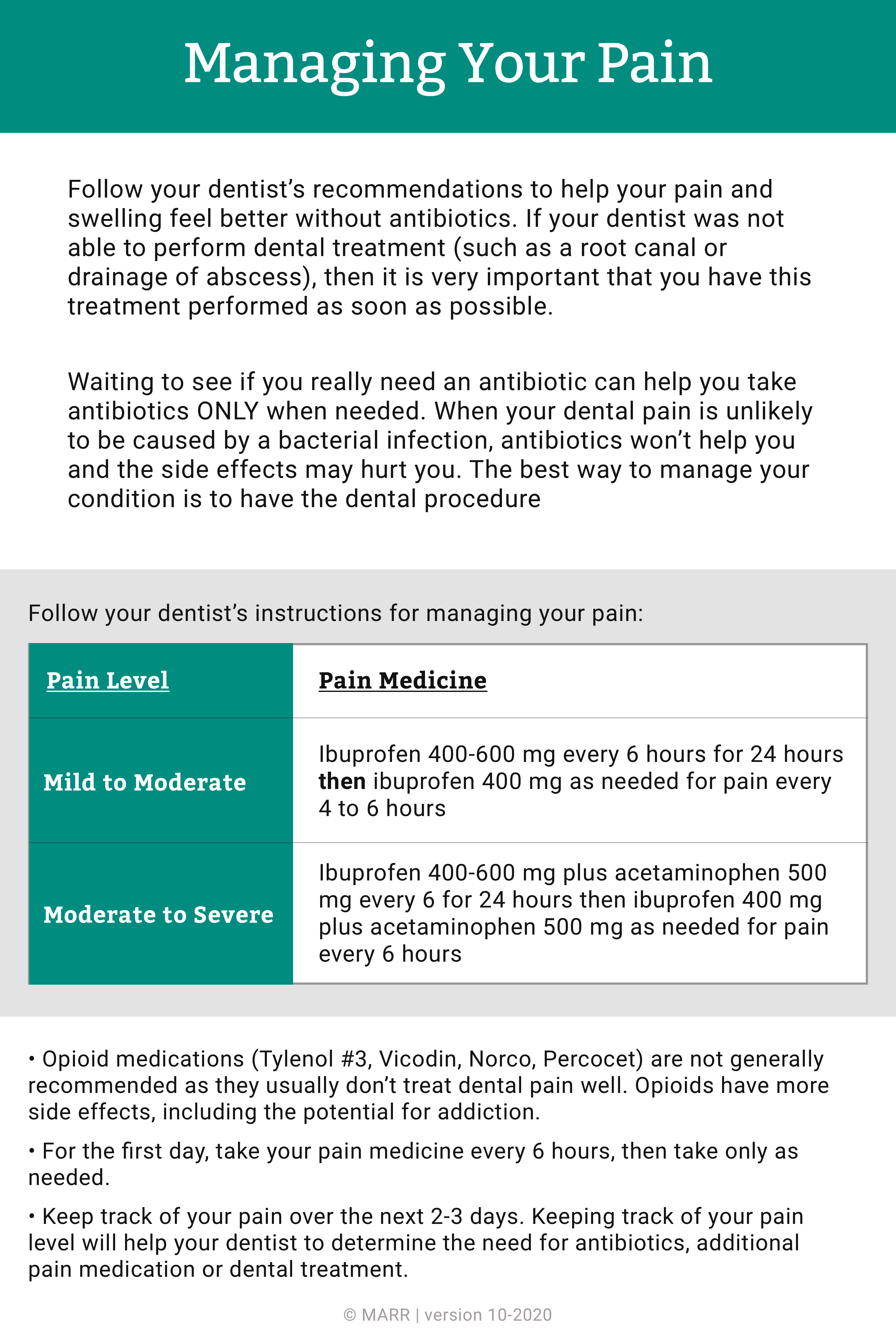
Intended Use: To keep in an accessible location in the office and aid dentists in proper antibiotic prescribing for dental pain and swelling.
There are two chairside guides on antibiotic use for dental pain and intra-oral swelling:
ADA chairside guide on antibiotic use for dental pain and intra-oral swelling when dental treatment IS immediately available
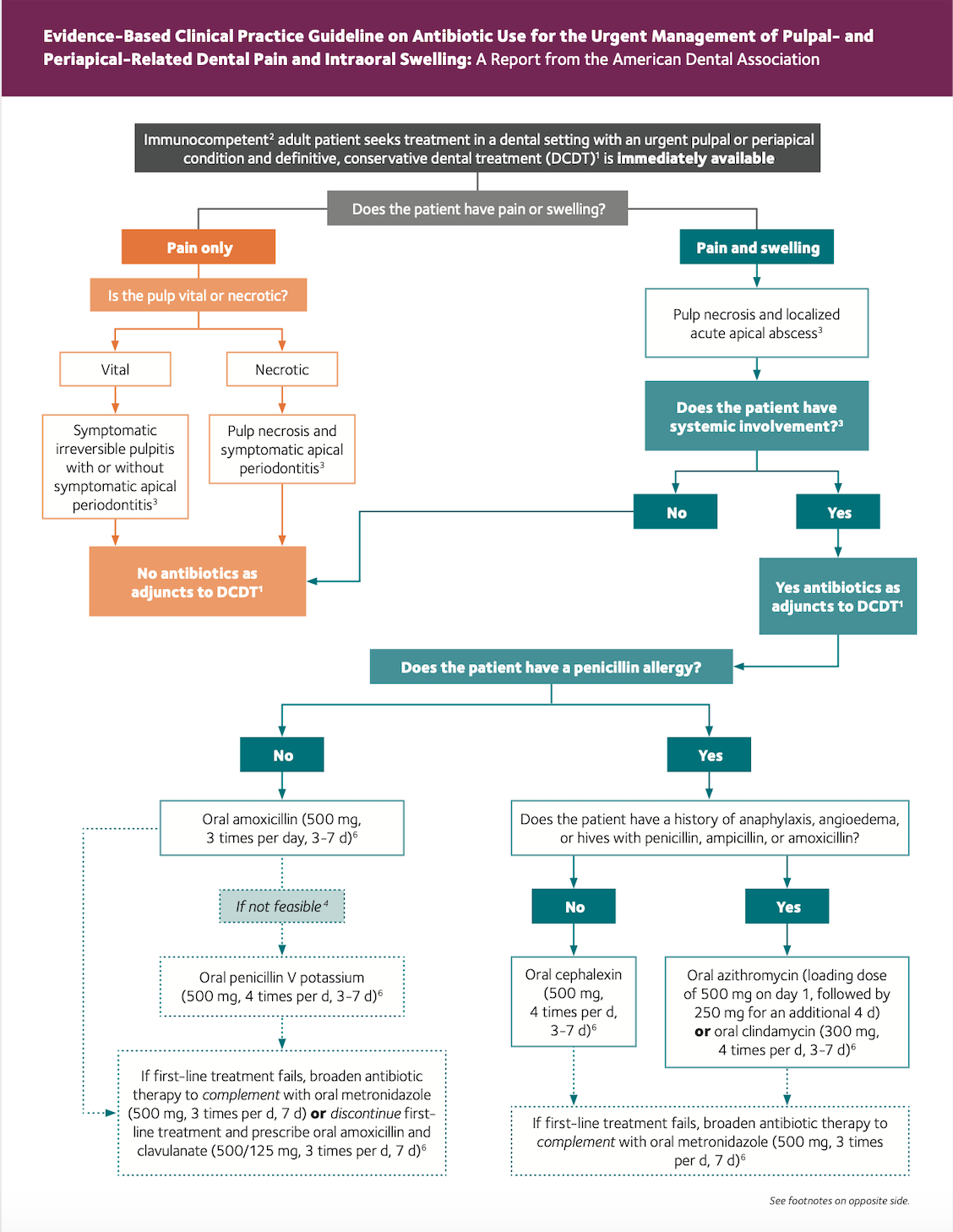 View full chairside guide PDF for when dental treatment is available
View full chairside guide PDF for when dental treatment is available
ADA chairside guide on antibiotic use for dental pain and intra-oral swelling when dental treatment IS NOT immediately available
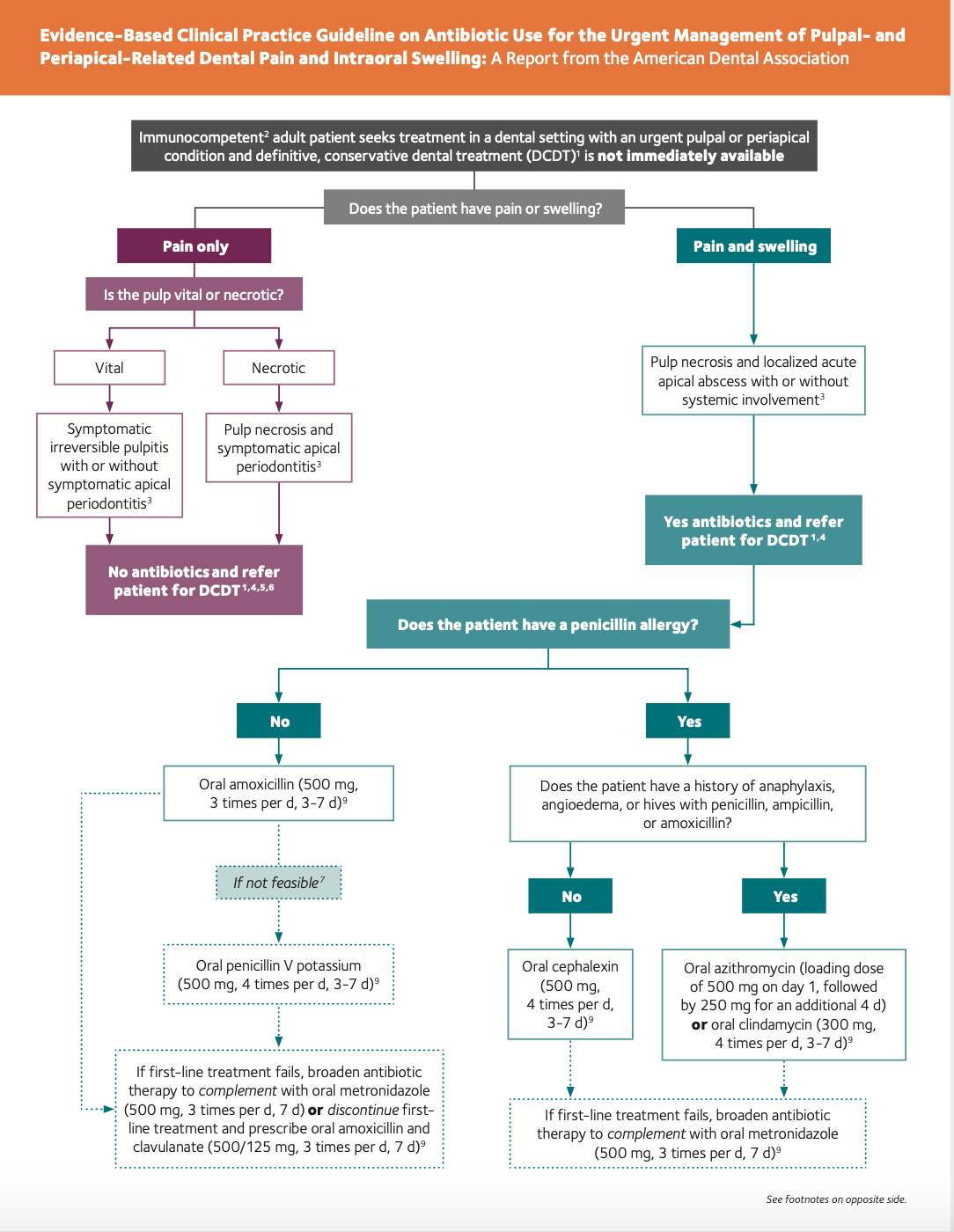 View full chairside guide PDF for when dental treatment is not immediately available
View full chairside guide PDF for when dental treatment is not immediately available
Refer to the ADA's webpage, Antibiotics for Dental Pain and Swelling, for guidelines and more information.
Intended Use: To support the dental office in referring appropriate patients for penicillin allergy assessment.
Penicillin Allergy Assessment is an antibiotic stewardship practice that promotes patient safety and informed decision-making for the consideration of optimal antibiotic therapy. This practice calls on healthcare settings, like dentists’ offices, to collaborate with patients and decide whether further evaluation is recommended. The Penicillin Allergy Assessment Tool (PAAT) has been developed by MARR and the Organization for Safety and Asepsis Procedures (OSAP). The tool consists of an algorithm and related indicators for use. To read the accompanying paper describing how the entire dental team can effectively utilize this tool, continue to the Journal of the Michigan Dental Association on this page.
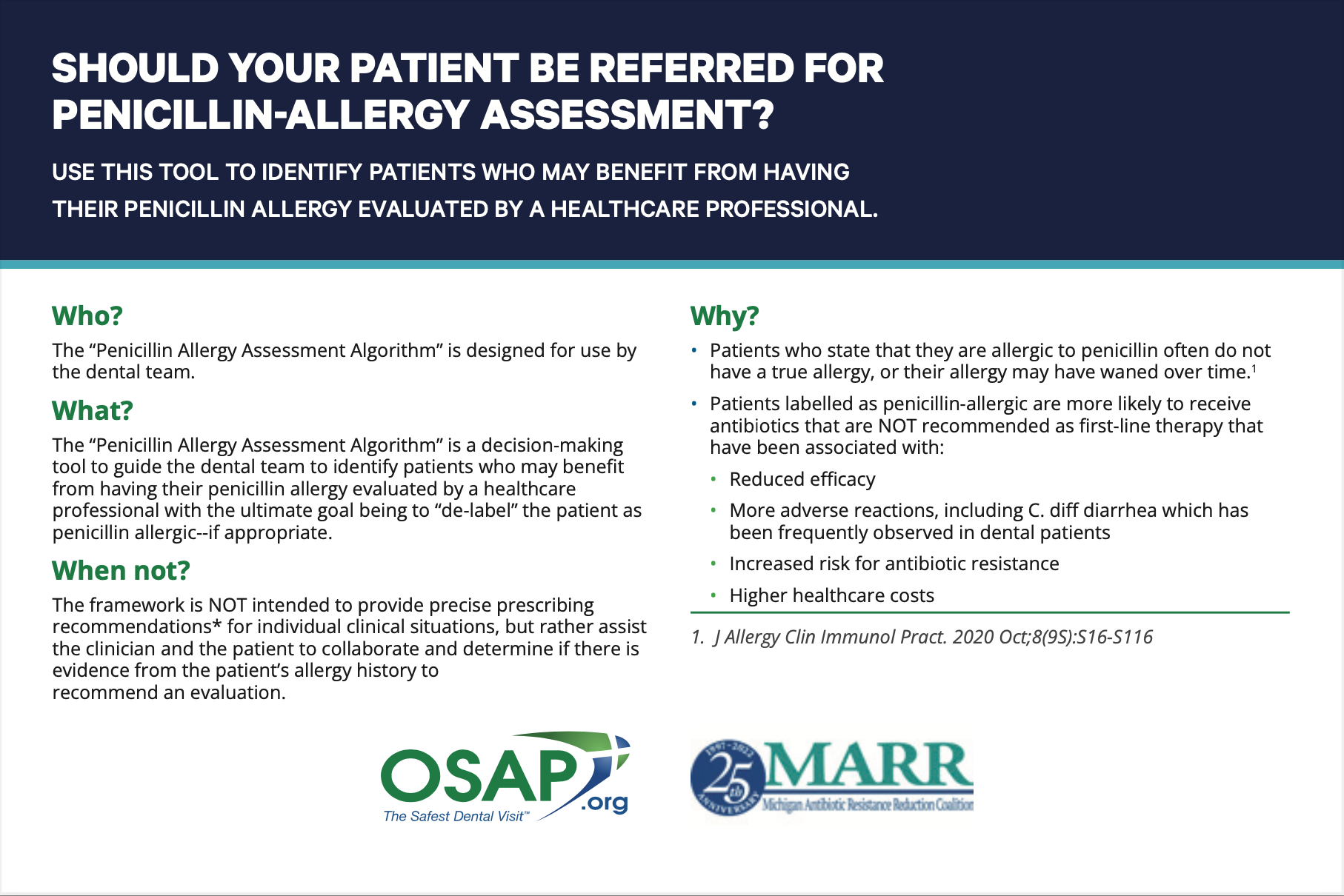
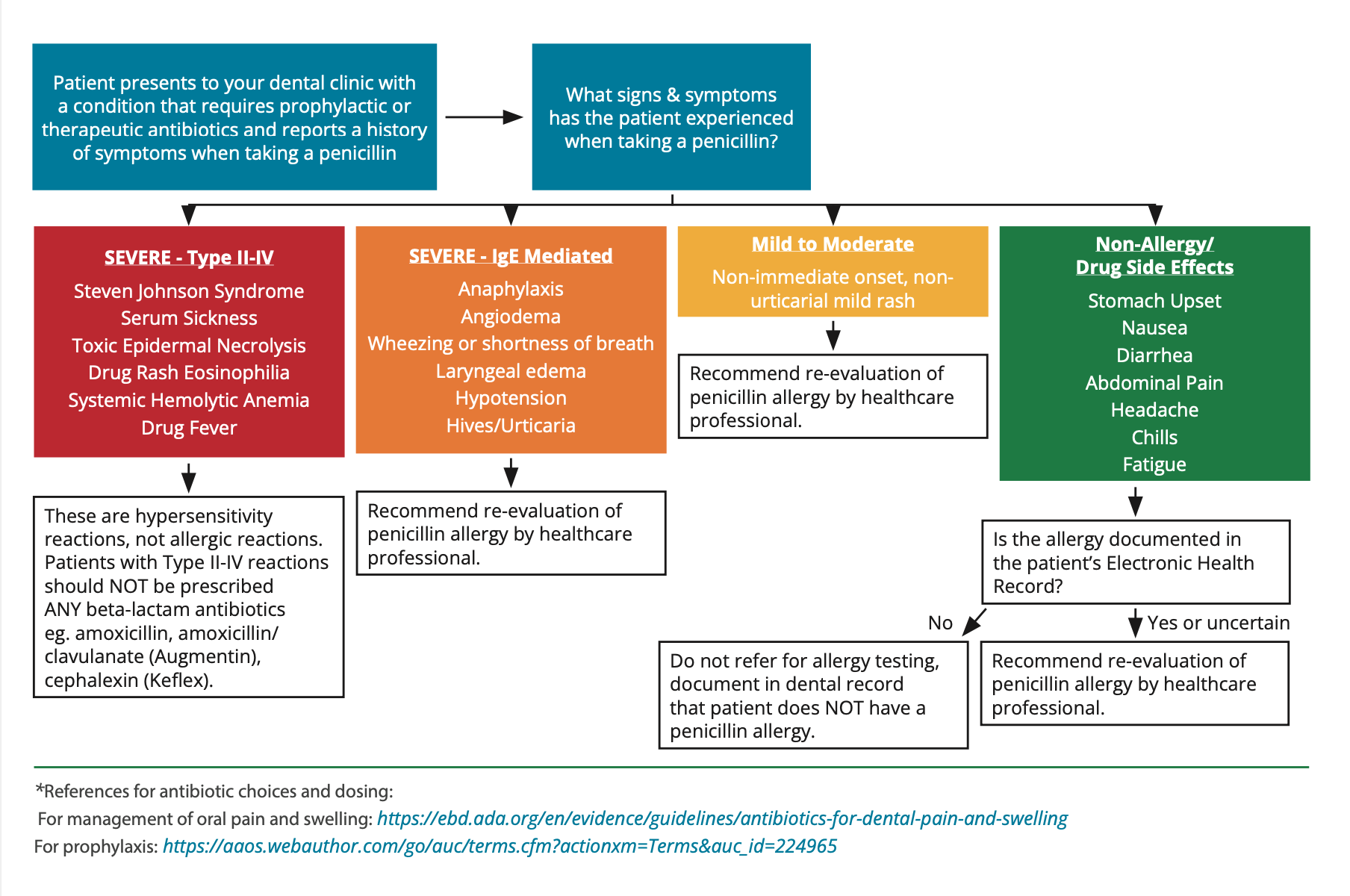
View/ Download PDF of the tool
MARR provides 4" x 6" laminated cards to dental offices free-of-charge.
Intended use: As a communicative resource to facilitate mislabeling of penicillin allergies across all healthcare settings, including dental offices and pharmacies.
Mislabeling of penicillin allergies has been associated with increased antimicrobial resistance, adverse effects, length of stay, and health care costs related to the use of broad-spectrum antibiotics.
Dentists can use this tool to implement and enhance antimicrobial stewardship practices in the outpatient setting.
Download the Allergy Reassessment Tool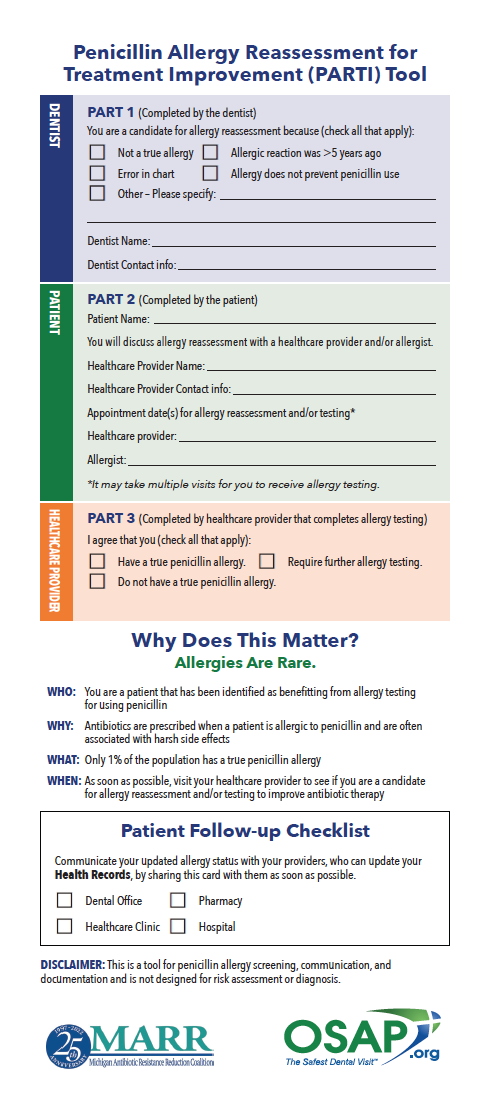
For infective endocarditis prophylaxis, current guidelines support pre-medication in a relatively small subset of patients. Refer to the article Prevention of Viridans Group Streptococcal Infective Endocarditis: A Scientific Statement From the American Heart Association by Walter R. Wilson et al Circulation 2021.
In general, for patients with prosthetic joint implants, prophylactic antibiotics are not recommended prior to dental procedures to prevent prosthetic joint infection.
Please refer to the ADA's webpage Antibiotic Prophylaxis Prior to Dental Procedures, for guidelines and more information.
What do Dental Teams need to know about Antibiotic Prophylaxis Prior to Invasive Dental Procedures in Patients with Total Joint Replacement (TJR)?
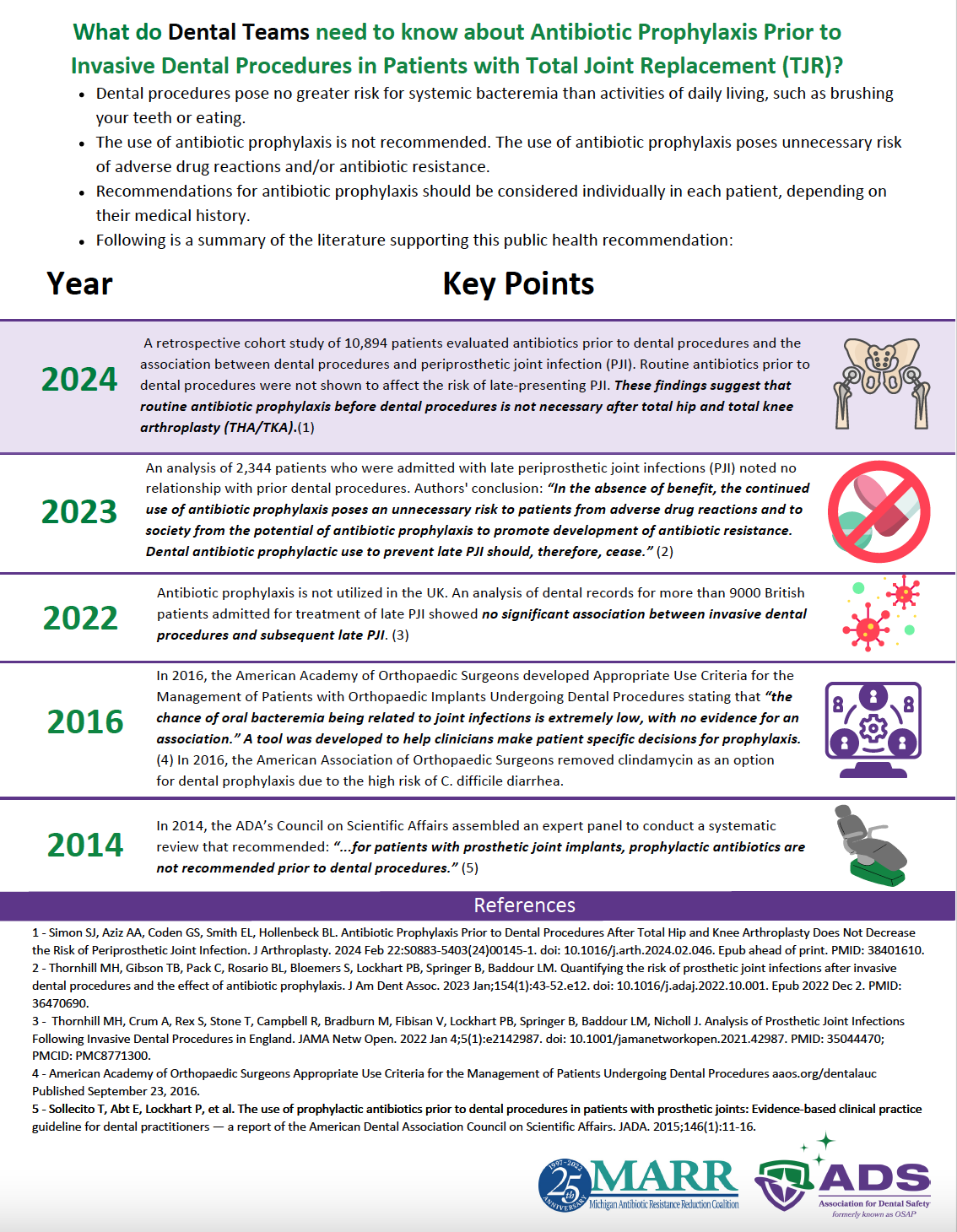
Recent evidence shows that for patients with more than one year post prosthetic device implant, the risk of antibiotic prophylaxis typically outweighs the benefits.This letter is a collaborative form of communication between dentists and their patients’ healthcare providers, used to highlight the latest guidelines on prophylaxis for their patients with total joint replacement.
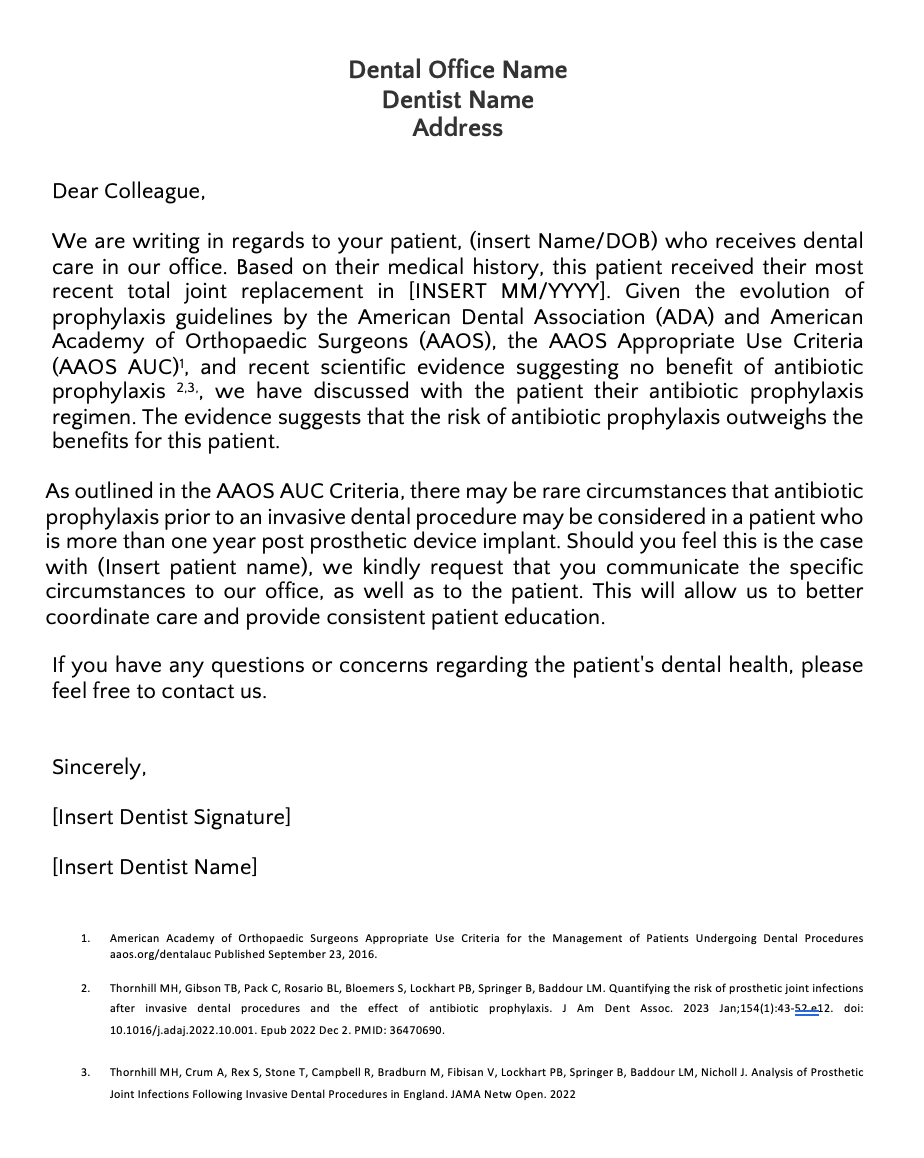
The American Academy of Orthopaedic Surgeons (AAOS) and American Dental Association (ADA) Council on Scientific Affairs have developed this Appropriate Use Criteria (AUC) to identify the appropriateness of the use of prophylactic antibiotics in the management of patients who have had orthopaedic implants, undergoing dental procedures. Patient information may be input into the tool and resulting recommendations printed out.
This 23-minute, case-based, educational video covers current guidelines for use of antibiotics in dental patients. Real-life scenarios are provided, illustrating how the entire dental office can support antibiotic stewardship.
This web page offers the complete collection of tools and resources that were reviewed during the video.
Although this video was developed with students in mind it is appropriate the entire dental office as a collective effort is needed by all to learn, educate, and implement guidelines for proper antibiotic use.
Please consider providing feedback on the video so that we may improve the resources we develop.
Feedback form - opens in a new tab
Videos, resources, and materials for dental patients are available on our Appropriate Antibiotic Use page
Since the 2019 ADA Guidelines advocate for patients with dental infections to discontinue antibiotic treatment 24 hours after resolution of pain and swelling, patients may have leftover antibiotics. Patients should be counseled to: